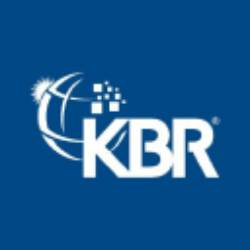NVEE

NV5 Global, Inc.
NVEE
(2.5)19,47 USD
6.97% ROA
4.08% ROE
44.81x PER
1.498.954.842,00 USD
33.79% DER
0% Yield
3.36% NPM
NV5 Global, Inc. Stock Analysis
NV5 Global, Inc. Fundamental Analysis
Fundamental analysis in stock investing is like studying the foundation of a house before buying it. It involves looking at a company's financial health, like its earnings, assets, and debts, to determine if it's a good investment based on its fundamental strength and potential for growth.
| # | Analysis | Rating |
|---|---|---|
| 1 |
ROA
The stock's ability to make a lot of money from its assets shows that it is very profitable, making it a good choice for people who want to invest and make a lot of money. |
|
| 2 |
DER
The stock has a low debt to equity ratio (30%), which means it has a small amount of debt compared to the ownership it holds |
|
| 3 |
Revenue Growth
With continuous growth in revenue over the last five years, this company has proven to be a lucrative investment option, showcasing its strong financial performance. |
|
| 4 |
ROE
The stock's ROE falls within an average range (6.4%), demonstrating satisfactory profitability and efficiency in utilizing shareholders' equity. |
|
| 5 |
PBV
The stock's PBV ratio (2x) reflects a fair valuation, making it an attractive option for investors seeking balanced opportunities. |
|
| 6 |
Net Profit Growth
The net profit of this company has shown steady growth over the past three years, highlighting its positive financial trajectory and making it an appealing choice for potential investors. |
|
| 7 |
Buffet Intrinsic Value
The company's stock shows potential as it is undervalued (2.126) according to Warren Buffett's formula, indicating that its intrinsic value exceeds the market price. |
|
| 8 |
Assets Growth
Company's revenue has stayed stagnant, showing no signs of improvement and making it a less favorable choice. |
|
| 9 |
Graham Number
Based on the Graham number, this company's stock price appears to be higher than its intrinsic value, signaling a potentially unfavorable investment choice. |
|
| 10 |
Dividend Growth
The company's dividend growth has remained flat for the past three years, offering no indication of improved returns and making it a less advantageous investment opportunity. |
|
| 11 |
Dividend
The company's decision to withhold dividends for three years raises questions about its ability to generate consistent returns. |
NV5 Global, Inc. Technical Analysis
Technical analysis in stock investing is like reading the patterns on a weather map to predict future weather conditions. It involves studying past stock price movements and trading volumes to make predictions about where a stock's price might go next, without necessarily looking at the company's financial health.
| # | Analysis | Recommendation |
|---|---|---|
| 1 | Awesome Oscillator | Hold |
| 2 | MACD | Buy |
| 3 | RSI | Hold |
| 4 | Stoch RSI | Sell |
NV5 Global, Inc. Price Chart
Financial Statements
Financial statements are like report cards for companies. They show how much money a company makes (income statement), what it owns and owes (balance sheet), and where it spends its money (cash flow statement), helping stock investors understand if a company is healthy and worth investing in.
Income Statements
An income statement for a company is like a scoreboard for its profits and losses. It shows how much money the company made (revenue) and how much it spent to make that money (expenses), helping stock investors see if a company is making a profit or not.
Revenue in stock investing is the total amount of money a company earns from its sales, and it's a key factor that investors consider to assess a company's financial performance and growth potential.
| Year | Revenue | Growth |
|---|---|---|
| 2010 | 32.098.000 | |
| 2011 | 63.366.000 | 49.35% |
| 2012 | 60.576.000 | -4.61% |
| 2013 | 68.232.000 | 11.22% |
| 2014 | 108.382.000 | 37.04% |
| 2015 | 154.655.000 | 29.92% |
| 2016 | 223.910.000 | 30.93% |
| 2017 | 333.034.000 | 32.77% |
| 2018 | 418.081.000 | 20.34% |
| 2019 | 508.938.000 | 17.85% |
| 2020 | 659.296.000 | 22.81% |
| 2021 | 706.706.000 | 6.71% |
| 2022 | 786.778.000 | 10.18% |
| 2023 | 957.148.000 | 17.8% |
| 2023 | 861.739.000 | -11.07% |
| 2024 | 945.304.000 | 8.84% |
Research and Development Expenses are the costs a company incurs to create and improve its products or services, which can be important for investors to evaluate a company's innovation and potential for future growth.
| Year | Research and Development Expenses | Growth |
|---|---|---|
| 2010 | 0 | |
| 2011 | 0 | 0% |
| 2012 | 0 | 0% |
| 2013 | 0 | 0% |
| 2014 | 0 | 0% |
| 2015 | 0 | 0% |
| 2016 | 0 | 0% |
| 2017 | 0 | 0% |
| 2018 | 0 | 0% |
| 2019 | 0 | 0% |
| 2020 | 0 | 0% |
| 2021 | 0 | 0% |
| 2022 | 0 | 0% |
| 2023 | 0 | 0% |
| 2023 | 0 | 0% |
| 2024 | 0 | 0% |
General and Administrative Expenses are the costs a company incurs to run its day-to-day operations, such as office rent, salaries, and utilities, which investors consider to understand a company's overall efficiency and management effectiveness.
| Year | General and Administrative Expenses | Growth |
|---|---|---|
| 2010 | 14.311.000 | |
| 2011 | 27.646.000 | 48.23% |
| 2012 | 27.843.000 | 0.71% |
| 2013 | 29.406.000 | 5.32% |
| 2014 | 34.950.000 | 15.86% |
| 2015 | 51.611.000 | 32.28% |
| 2016 | 82.949.000 | 37.78% |
| 2017 | 125.558.000 | 33.94% |
| 2018 | 148.335.000 | 15.36% |
| 2019 | 188.359.000 | 21.25% |
| 2020 | 248.310.000 | 24.14% |
| 2021 | 251.017.000 | 1.08% |
| 2022 | 259.602.000 | 3.31% |
| 2023 | 322.076.000 | 19.4% |
| 2023 | 293.805.000 | -9.62% |
| 2024 | 357.152.000 | 17.74% |
EBITDA stands for Earnings Before Interest, Taxes, Depreciation, and Amortization. It is a measure that helps stock investors analyze a company's profitability by looking at its earnings without considering certain expenses. This helps to get a clearer picture of the company's financial performance and its ability to generate cash flow.
| Year | EBITDA | Growth |
|---|---|---|
| 2010 | 1.423.000 | |
| 2011 | 4.677.000 | 69.57% |
| 2012 | 3.825.000 | -22.27% |
| 2013 | 5.410.000 | 29.3% |
| 2014 | 10.231.000 | 47.12% |
| 2015 | 17.167.000 | 40.4% |
| 2016 | 24.631.000 | 30.3% |
| 2017 | 39.696.000 | 37.95% |
| 2018 | 53.069.000 | 25.2% |
| 2019 | 66.433.000 | 20.12% |
| 2020 | 99.106.000 | 32.97% |
| 2021 | 123.506.000 | 19.76% |
| 2022 | 123.058.000 | -0.36% |
| 2023 | 121.468.000 | -1.31% |
| 2023 | 119.200.000 | -1.9% |
| 2024 | 117.888.000 | -1.11% |
Gross profit is the money a company makes from selling its products or services after subtracting the cost of producing or providing them, and it is an important measure for investors to understand a company's profitability.
| Year | Gross Profit | Growth |
|---|---|---|
| 2010 | 16.232.000 | |
| 2011 | 32.418.000 | 49.93% |
| 2012 | 31.668.000 | -2.37% |
| 2013 | 34.816.000 | 9.04% |
| 2014 | 45.181.000 | 22.94% |
| 2015 | 68.778.000 | 34.31% |
| 2016 | 107.580.000 | 36.07% |
| 2017 | 165.254.000 | 34.9% |
| 2018 | 201.404.000 | 17.95% |
| 2019 | 245.382.000 | 17.92% |
| 2020 | 334.538.000 | 26.65% |
| 2021 | 359.314.000 | 6.9% |
| 2022 | 385.974.000 | 6.91% |
| 2023 | 461.776.000 | 16.42% |
| 2023 | 430.362.000 | -7.3% |
| 2024 | 428.812.004 | -0.36% |
Net income in stock investing is like the money a company actually gets to keep as profit after paying all its bills, and it's an important measure to understand how well a company is doing financially.
| Year | Net Profit | Growth |
|---|---|---|
| 2010 | -175.000 | |
| 2011 | 1.419.000 | 112.33% |
| 2012 | 1.293.000 | -9.74% |
| 2013 | 2.759.000 | 53.14% |
| 2014 | 4.893.000 | 43.61% |
| 2015 | 8.492.000 | 42.38% |
| 2016 | 11.607.000 | 26.84% |
| 2017 | 24.006.000 | 51.65% |
| 2018 | 26.856.000 | 10.61% |
| 2019 | 23.756.000 | -13.05% |
| 2020 | 21.018.000 | -13.03% |
| 2021 | 47.147.000 | 55.42% |
| 2022 | 49.973.000 | 5.66% |
| 2023 | 53.264.000 | 6.18% |
| 2023 | 44.613.000 | -19.39% |
| 2024 | 31.628.000 | -41.06% |
EPS, or earnings per share, is a measure that shows how much profit a company has earned for each outstanding share of its stock, and it is important for stock investors as it helps understand the profitability of a company and compare it with other companies in the market.
| Year | Earning per Share (EPS) | Growth |
|---|---|---|
| 2010 | 0 | |
| 2011 | 0 | 0% |
| 2012 | 0 | 0% |
| 2013 | 0 | 0% |
| 2014 | 0 | 0% |
| 2015 | 0 | 0% |
| 2016 | 0 | 0% |
| 2017 | 1 | 0% |
| 2018 | 1 | 0% |
| 2019 | 0 | 0% |
| 2020 | 0 | 0% |
| 2021 | 1 | 0% |
| 2022 | 1 | 0% |
| 2023 | 4 | 100% |
| 2023 | 1 | 0% |
| 2024 | 2 | 100% |
Cashflow Statements
Cashflow statements show the movement of money in and out of a company, helping stock investors understand how much money a company makes and spends. By examining cashflow statements, investors can assess if a company is generating enough cash to pay its bills, invest in growth, and provide returns to stockholders.
Free cash flow is the leftover cash that a company generates after covering its operating expenses and capital expenditures, which is important for stock investors as it shows how much money a company has available to invest in growth, pay dividends, or reduce debt.
| Year | Free Cashflow | Growth |
|---|---|---|
| 2010 | 2.357.000 | |
| 2011 | 2.050.000 | -14.98% |
| 2012 | 982.000 | -108.76% |
| 2013 | 2.888.000 | 66% |
| 2014 | 595.000 | -385.38% |
| 2015 | 5.371.000 | 88.92% |
| 2016 | 14.228.000 | 62.25% |
| 2017 | 15.386.000 | 7.53% |
| 2018 | 32.796.000 | 53.09% |
| 2019 | 37.275.000 | 12.02% |
| 2020 | 86.154.000 | 56.73% |
| 2021 | 87.539.000 | 1.58% |
| 2022 | 78.291.000 | -11.81% |
| 2023 | 45.041.000 | -73.82% |
| 2023 | 15.915.000 | -183.01% |
| 2024 | -16.544.000 | 196.2% |
Operating cash flow represents the cash generated or consumed by a company's day-to-day operations, excluding external investing or financing activities, and is crucial for stock investors as it shows how much cash a company is generating from its core business operations.
| Year | Operating Cashflow | Growth |
|---|---|---|
| 2010 | 2.575.000 | |
| 2011 | 2.422.000 | -6.32% |
| 2012 | 1.536.000 | -57.68% |
| 2013 | 3.421.000 | 55.1% |
| 2014 | 1.420.000 | -140.92% |
| 2015 | 5.972.000 | 76.22% |
| 2016 | 15.213.000 | 60.74% |
| 2017 | 17.625.000 | 13.69% |
| 2018 | 34.999.000 | 49.64% |
| 2019 | 39.900.000 | 12.28% |
| 2020 | 96.009.000 | 58.44% |
| 2021 | 101.442.000 | 5.36% |
| 2022 | 93.980.000 | -7.94% |
| 2023 | 62.207.000 | -51.08% |
| 2023 | 19.933.000 | -212.08% |
| 2024 | -11.312.000 | 276.21% |
Capex, short for capital expenditures, refers to the money a company spends on acquiring or upgrading tangible assets like buildings, equipment, or technology, which is important for stock investors as it indicates how much a company is investing in its infrastructure to support future growth and profitability.
| Year | Capital Expenditure | Growth |
|---|---|---|
| 2010 | 218.000 | |
| 2011 | 372.000 | 41.4% |
| 2012 | 554.000 | 32.85% |
| 2013 | 533.000 | -3.94% |
| 2014 | 825.000 | 35.39% |
| 2015 | 601.000 | -37.27% |
| 2016 | 985.000 | 38.98% |
| 2017 | 2.239.000 | 56.01% |
| 2018 | 2.203.000 | -1.63% |
| 2019 | 2.625.000 | 16.08% |
| 2020 | 9.855.000 | 73.36% |
| 2021 | 13.903.000 | 29.12% |
| 2022 | 15.689.000 | 11.38% |
| 2023 | 17.166.000 | 8.6% |
| 2023 | 4.018.000 | -327.23% |
| 2024 | 5.232.000 | 23.2% |
Balance Sheet
Balance sheets provide a snapshot of a company's financial health and its assets (such as cash, inventory, and property) and liabilities (like debts and obligations) at a specific point in time. For stock investors, balance sheets help assess the company's overall worth and evaluate its ability to meet financial obligations and support future growth.
Equity refers to the ownership interest or stake that shareholders have in a company, representing their claim on its assets and earnings after all debts and liabilities are paid.
| Year | Equity | Growth |
|---|---|---|
| 2010 | 9.680.000 | |
| 2011 | 10.522.000 | 8% |
| 2012 | 11.369.000 | 7.45% |
| 2013 | 28.809.000 | 60.54% |
| 2014 | 35.605.000 | 19.09% |
| 2015 | 80.763.000 | 55.91% |
| 2016 | 148.161.000 | 45.49% |
| 2017 | 180.097.000 | 17.73% |
| 2018 | 317.542.000 | 43.28% |
| 2019 | 355.963.000 | 10.79% |
| 2020 | 394.069.000 | 9.67% |
| 2021 | 624.720.000 | 36.92% |
| 2022 | 694.240.000 | 10.01% |
| 2023 | 759.917.000 | 8.64% |
| 2023 | 775.795.000 | 2.05% |
| 2024 | 802.599.000 | 3.34% |
Assets represent the valuable resources that a company owns, such as cash, inventory, property, and equipment, and understanding a company's assets helps investors assess its value and potential for generating future profits.
| Year | Assets | Growth |
|---|---|---|
| 2010 | 32.336.000 | |
| 2011 | 28.000.000 | -15.49% |
| 2012 | 29.963.000 | 6.55% |
| 2013 | 44.875.000 | 33.23% |
| 2014 | 55.390.000 | 18.98% |
| 2015 | 111.769.000 | 50.44% |
| 2016 | 223.659.000 | 50.03% |
| 2017 | 305.780.000 | 26.86% |
| 2018 | 439.421.000 | 30.41% |
| 2019 | 893.137.000 | 50.8% |
| 2020 | 881.175.000 | -1.36% |
| 2021 | 961.943.000 | 8.4% |
| 2022 | 935.723.000 | -2.8% |
| 2023 | 1.205.965.000 | 22.41% |
| 2023 | 1.241.201.000 | 2.84% |
| 2024 | 1.234.383.000 | -0.55% |
Liabilities refer to the financial obligations or debts that a company owes to creditors or external parties, and understanding a company's liabilities is important for investors as it helps assess the company's financial risk and ability to meet its obligations.
| Year | Liabilities | Growth |
|---|---|---|
| 2010 | 22.656.000 | |
| 2011 | 17.478.000 | -29.63% |
| 2012 | 18.594.000 | 6% |
| 2013 | 16.066.000 | -15.74% |
| 2014 | 19.785.000 | 18.8% |
| 2015 | 31.006.000 | 36.19% |
| 2016 | 75.498.000 | 58.93% |
| 2017 | 125.683.000 | 39.93% |
| 2018 | 121.879.000 | -3.12% |
| 2019 | 537.174.000 | 77.31% |
| 2020 | 487.106.000 | -10.28% |
| 2021 | 337.223.000 | -44.45% |
| 2022 | 241.483.000 | -39.65% |
| 2023 | 446.048.000 | 45.86% |
| 2023 | 465.406.000 | 4.16% |
| 2024 | 431.784.000 | -7.79% |
NV5 Global, Inc. Financial Ratio (TTM)
Valuation Metrics
- Revenue per Share
- 60.72
- Net Income per Share
- 2.05
- Price to Earning Ratio
- 44.81x
- Price To Sales Ratio
- 1.61x
- POCF Ratio
- 31.47
- PFCF Ratio
- 51.48
- Price to Book Ratio
- 1.76
- EV to Sales
- 1.87
- EV Over EBITDA
- 19.85
- EV to Operating CashFlow
- 38.73
- EV to FreeCashFlow
- 59.79
- Earnings Yield
- 0.02
- FreeCashFlow Yield
- 0.02
- Market Cap
- 1,50 Bil.
- Enterprise Value
- 1,74 Bil.
- Graham Number
- 49.15
- Graham NetNet
- -11.46
Income Statement Metrics
- Net Income per Share
- 2.05
- Income Quality
- 1.42
- ROE
- 0.04
- Return On Assets
- 0.03
- Return On Capital Employed
- 0.05
- Net Income per EBT
- 0.89
- EBT Per Ebit
- 0.73
- Ebit per Revenue
- 0.05
- Effective Tax Rate
- -0.13
Margins
- Sales, General, & Administrative to Revenue
- 0.23
- Research & Developement to Revenue
- 0
- Stock Based Compensation to Revenue
- 0.03
- Gross Profit Margin
- 0.49
- Operating Profit Margin
- 0.05
- Pretax Profit Margin
- 0.04
- Net Profit Margin
- 0.03
Dividends
- Dividend Yield
- 0
- Dividend Yield %
- 0
- Payout Ratio
- 0
- Dividend Per Share
- 0
Operating Metrics
- Operating Cashflow per Share
- 2.93
- Free CashFlow per Share
- 1.9
- Capex to Operating CashFlow
- 0.35
- Capex to Revenue
- 0.02
- Capex to Depreciation
- 0.25
- Return on Invested Capital
- 0.05
- Return on Tangible Assets
- 0.07
- Days Sales Outstanding
- 118.12
- Days Payables Outstanding
- 46.2
- Days of Inventory on Hand
- 0
- Receivables Turnover
- 3.09
- Payables Turnover
- 7.9
- Inventory Turnover
- 0
- Capex per Share
- 1.03
Balance Sheet
- Cash per Share
- 1,91
- Book Value per Share
- 52,24
- Tangible Book Value per Share
- 1.37
- Shareholders Equity per Share
- 52.24
- Interest Debt per Share
- 17.68
- Debt to Equity
- 0.34
- Debt to Assets
- 0.22
- Net Debt to EBITDA
- 2.76
- Current Ratio
- 2.29
- Tangible Asset Value
- 0,02 Bil.
- Net Current Asset Value
- -0,08 Bil.
- Invested Capital
- 1072719000
- Working Capital
- 0,20 Bil.
- Intangibles to Total Assets
- 0.63
- Average Receivables
- 0,29 Bil.
- Average Payables
- 0,06 Bil.
- Average Inventory
- 0
- Debt to Market Cap
- 0.18
Dividends
Dividends in stock investing are like rewards that companies give to their shareholders. They are a portion of the company's profits distributed to investors, typically in the form of cash payments, as a way for them to share in the company's success.
| Year | Dividends | Growth |
|---|
NV5 Global, Inc. Profile
About NV5 Global, Inc.
NV5 Global offers professional and technical engineering and consulting solutions to public and private sector clients in the infrastructure, utility services, construction, real estate, and environmental markets in the United States and internationally. It operates through three segments: Infrastructure; Building, Technology & Sciences; and Geospatial Solutions. The company provides site selection and planning, design, water resources, transportation, structural engineering, land development, surveying, power delivery, building code compliance, and other services; and construction materials testing and engineering, geotechnical engineering and consulting, and forensic consulting services. It also provides governmental outsourcing and consulting, and technical outsourcing services; and geospatial data analytic and mapping services. In addition, it offers mechanical, electrical, and plumbing design; commissioning; energy performance, management, and optimization; climate change and reducing CO2 emissions; building program management; acoustical design consulting; and audiovisualsecurity and surveillanceinformation technologydata center services. Further, the company provides various services, such as investigating and analyzing environmental conditions, and recommending corrective measures and procedures; occupational health and safety services; radiation exposure and protection, and nuclear safety and industrial hygiene analyses services; hydrogeological modeling and environmental programs; water resource planning, monitoring, and environmental management of wastewater facilities; solid waste landfill investigations; permitting and compliance; storm water pollution; environmental impact statement support; agricultural waste management and permitting; and wetland evaluations. The company was formerly known as NV5 Holdings, Inc. and changed its name to NV5 Global, Inc. in December 2015. NV5 Global, Inc. was founded in 1949 and is headquartered in Hollywood, Florida.
- CEO
- Mr. Alexander A. Hockman P.E.
- Employee
- 3.813
- Address
-
200 South Park Road
Hollywood, 33021
NV5 Global, Inc. Executives & BODs
| # | Name | Age |
|---|---|---|
| 1 |
Mr. Dickerson Wright P.E. Executive Chairman |
70 |
| 2 |
Mr. Alexander A. Hockman P.E. Co-Chief Executive Officer |
70 |
| 3 |
Mr. Todd George Chief Operating Officer of Infrastructure - West |
70 |
| 4 |
Mr. Donald C. Alford MBA Executive Vice President |
70 |
| 5 |
Mr. Kevin Wedman CBO CBO, Senior Vice President & Director of ENERGY 2021 |
70 |
| 6 |
Mr. Richard Tong Esq. Executive Vice President, General Counsel & Director |
70 |
| 7 |
Mr. Jack Cochran Vice President of Marketing & Investor Relations |
70 |
| 8 |
Ms. Mary Jo E. O'Brien Executive Vice President, Chief Administrative Officer, Secretary & Director |
70 |
| 9 |
Mr. Edward H. Codispoti Chief Financial Officer |
70 |
| 10 |
Mr. Ben Heraud Co-Chief Executive Officer |
70 |











